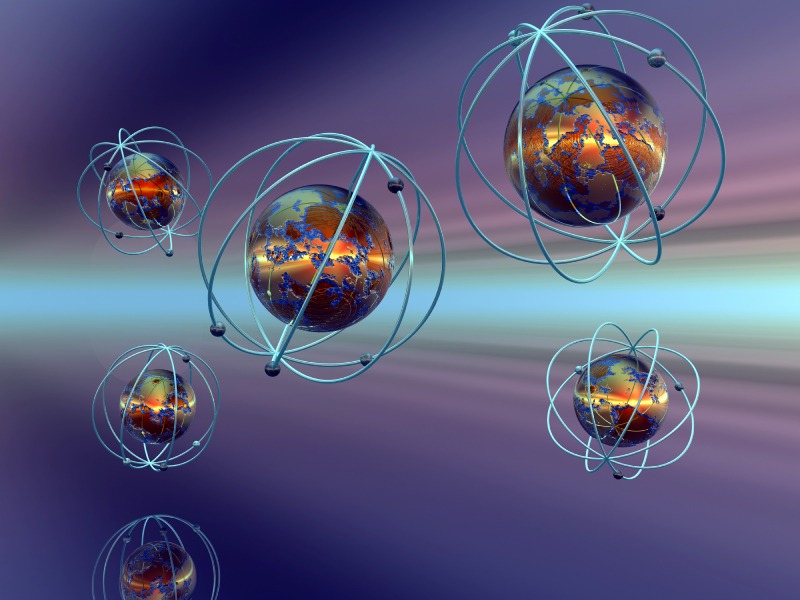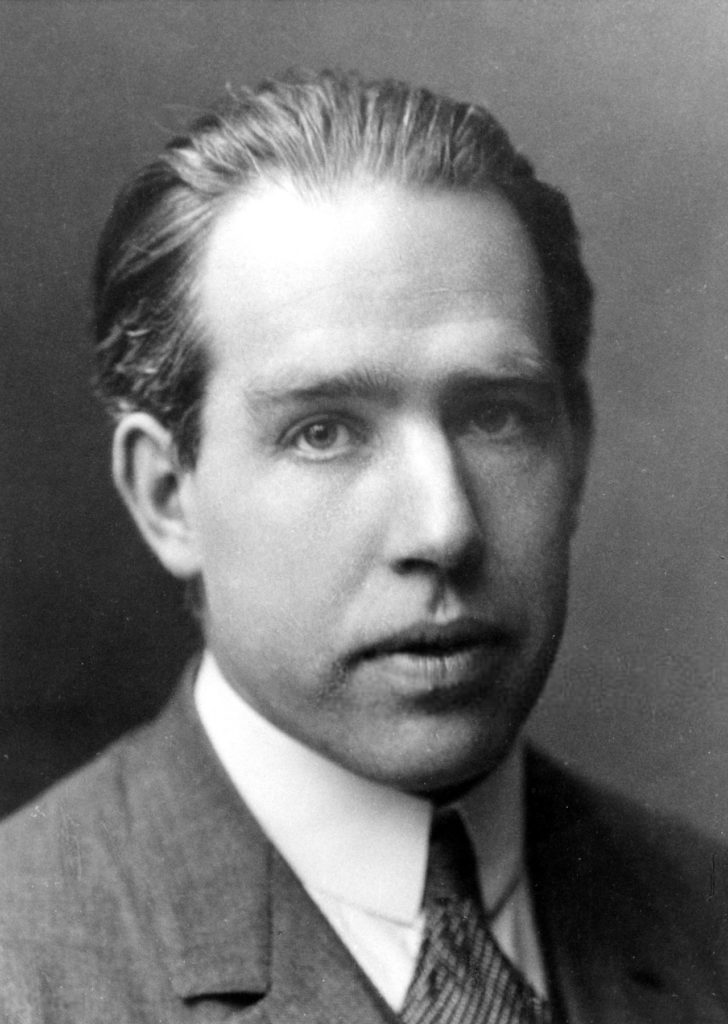NLP, Synchronicity and Awareness
Synchronicities are patterns that repeat in time. The word ‘synchronicity’ references the gears or wheels of time, though the actual concept of synchronicity cannot be scientifically proven. One can only record synchronicities as they occur and watch the patterns of behaviour that create them. The concept of synchronicity is currently linked more to metaphysics, yet physics (quantum physics) and metaphysics are merging, thus showing their interconnection and how we manifest synchronicities in our lives.
Oner way of looking at Synchronicity are people, places or events that you attract into your life to help you evolve to higher consciousness or to place emphasis on something going on in your life. To make sense of that, you’ll have to agree that your prime directive in life is to evolve yourself and grow as a person; if not, this article won’t be for you!
If you are still with the article, then further what we are saying is the more consciously you develop yourself and are aware of how you are evolving as a person, the higher your energy/frequency becomes and the faster you manifest positively. Each day of your life you attract coincidences, synchronicities, or things that everyday people may just call luck or chance.

Even if you don’t believe in this concept, it doesn’t matter. Things are going to happen whether you believe that things around you are intimately connected to you or not!
My personal preference is to look for synchronicity as it raises my awareness and consciousness daily. If you start to come into the notion that there are no accidents, then you’ll be much more powerful about your mind and body and be able to deal with issues with empowerment. Not all synchronicities are positive. Those that tend to believe in synchronicity and the law of attraction, sometimes tend to disregard the negative dramas to be swept under the carpet. Yet if you have model of synchronicity, you must alos see it from all angles and take responsibility for all events and the links back to yourself. In fact the word responsibility came from the phrase “Able to respond”. In other words to deal with the issues at hand as if they are yours.
Here’s how that may work:
If you are have emotional problems, and therefore probably manifesting drama around you, you will attract people and events as reflections of your own inner turmoil. Synchronicity may occur to make a quick point. Don’t blow them out of proportion. You must look at the bigger picture of the synchronicity, think outside the box, (the patterns of reality) not at the actual experience. You can consider an event synchronistic when an inner experience such as a dream, vision, or other form of deja vu, prepares you for the physical event.
Examples of Synchronicity
You are suffering with financial difficulties, yet money for basic expenses such as rent, food, and utilities, always manifests. You can begin to trust this. At first you thank the universe or god, then you realize you create this abundance. You are learning to watch how you manifest and why, watching yourself from outside the box. One of our trainers has a fantastic way of running out of money and when it gets uncomfortable enough he simply get a massive coaching or training job…just like that. I’ve started joking with him that when things are getting low it must be time for the big deal to come in. And it does!
You have just received your last check from unemployment when suddenly a job comes along. You walk into a book store not knowing what to buy, and the book you need falls from a shelf and practically hits you over the head. You have been feeling ill with no clear diagnosis. You meet someone who knows a doctor or healer with the answers. All physical problems stem from emotional or unresolved issues. Your deeper mind will point out the patterns and hopefully the solutions. When the person is ready to heal, the doctor will be there. When the student is ready, the Master arrives. That person will often show up by synchronicity. When you are confused and in emotional pain, you either have trouble manifesting synchronicities or they are major learning lessons.
There is a sudden relocation which seems to be for one reason, but later you find much more than you bargained for as the synchronicities rapid occur as if a domino effect. For example, you relocate for a new job, then, as if by synchronicity, someone ‘special’ comes into your life. You and that person have attracted each other for experience, as all life is nothing more than that. In another case, the energies of the area hold something transformational for you, which is perhaps the reason your soul created the move in the first place.
You finally end a bad relationship and immediately another partner comes into your life as if by synchronicity.
You drive to a place where parking is “next to impossible” and someone pulls out of a parking spot or it is waiting for you.
You meet someone who interests you and touches your soul. Through synchronicity that person seems to come into your life over and over again. You begin to feel a destiny with that person. You begin to think with your heart instead of your head. You connect with that person. In some cases the karma between the two people is positive but in many cases you have attracted that person into your life for a learning lesson whether you are aware of it or not.
You feel depressed and can’t find focus in your life. The next person you talk you says something that brings needed guidance. In a world of wounded souls, and evolving consciousness, answers to help and guide will come more quickly and from different sources than in your past. Learn from those who come along, but never become co-dependent.
A well-known example of synchronicity involves the true story of French writer Emile Deschamps. In 1805 he was treated to some plum pudding by Monsieur de Fontgibu. Ten years later, he encountered plum pudding on the menu of a Paris restaurant, and wanted to order some, but the waiter told him the last dish had already been served to another customer, who turns out to be Monsieur de Fontgibu. In 1832 Emile Deschamps visited a restaurant with a friend and is once again offered plum pudding. He recalled the earlier incident and told his friend that only Monsieur de Fontgibu is missing to make the setting complete. At that moment a senile Monsieur de Fontgibu enters the room – by ‘mistake’.
Carl Jung and Synchronicity
Synchronicities are meaningful ‘coincidences’.

Synchronicity is a word coined by the Swiss psychologist Carl Jung to describe the temporally coincident occurrences of acausal events. It was a principle that he felt compassed his concept of the collective unconscious, in that it was descriptive of a governing dynamic that underlay the whole of human experience and history, social, emotional, psychological, and spiritual. Jung believed that many experiences perceived as coincidence were due not merely to chance, but instead potentially reflected the manifestation of coincident events or circumstances consequent to this governing dynamic. Jung spoke of synchronicity as being an “acausal connecting principle” (ie. a pattern of connection that is not explained by causality).
Jung believed the traditional notions of causality were incapable of explaining some of the more improbable forms of coincidence. Where it is plain, felt Jung, that no causal connection can be demonstrated between two events, but where a meaningful relationship nevertheless exists between them, a wholly different type of principle is likely to be operating. Jung called this principle “synchronicity.”
In The Structure and Dynamics of the Psyche, Jung describes how, during his research into the phenomenon of the collective unconscious, he began to observe coincidences that were connected in such a meaningful way that their occurrence seemed to defy the calculations of probability. He provided numerous examples from his own psychiatric case-studies, many now legendary.
“A young woman I was treating had, at a critical moment, a dream in which she was given a golden scarab. While she was telling me her dream, I sat with my back to the closed window. Suddenly I heard a noise behind me, like a gentle tapping. I turned round and saw a flying insect knocking against the window-pane from outside. I opened the window and caught
the creature in the air as it flew in. It was the nearest analogy to the golden scarab that one finds in our latitudes, a scarabaeid beetle, the common rose-chafer (Cetoaia urata) which contrary to its usual habits had evidently felt an urge to get into a dark room at this particular moment. I must admit that nothing like it ever happened to me before or since, and that the dream of the patient has remained unique in my experience.” The Scarab represented Self-Generation, Resurrection and Renewal.
Who then, might we say, was responsible for the synchronous arrival of the beetle, Jung or the patient? While on the surface reasonable, such a question presupposes a chain of causality Jung claimed was absent from such experience.
As psychoanalyst Nandor Fodor has observed, the scarab, by Jung’s view, had no determinable cause, but instead complemented the “impossibility” of the analysis. The disturbance also (as synchronicities often do) prefigured a profound transformation. For, as Fodor observes, Jung’s patient had–until the appearance of the beetle–shown excessive rationality, remaining psychologically inaccessible. Once presented with the scarab, however, she improved.
Because Jung believed the phenomenon of synchronicity was primarily connected with psychic conditions, he felt that such couplings of inner (subjective) and outer (objective) reality evolved through the influence of the archetypes, patterns inherent in the human psyche and shared by all of mankind.
These patterns, or “primordial images,” as Jung sometimes refers to them, comprise man’s collective unconscious, representing the dynamic source of all human confrontation with death, conflict, love, sex, rebirth and mystical experience. When an archetype is activated by an emotionally charged event (such as a tragedy), says Jung, other related events tend to draw near. In this way the archetypes become a doorway that provide us access to the experience of meaningful (and often insightful) coincidence.
Implicit in Jung’s concept of synchronicity is the belief in the ultimate “oneness” of the universe. As Jung expressed it, such phenomenon betrays a “peculiar interdependence of objective elements among themselves as well as with the subjective (psychic) states of the observer or observers.” Jung claimed to have found evidence of this interdependence, not only in his psychiatric studies, but in his research of esoteric practices as well.
Of the I Ching, a Chinese method of divination which Jung regarded as the clearest expression of the synchronicity principle, he wrote:
“The Chinese mind, as I see it at work in the I Ching, seems to be exclusively preoccupied with the chance aspect of events. What we call coincidence seems to be the chief concern of this peculiar mind, and what we worship as causality passes almost unnoticed…While the Western mind carefully sifts, weighs, selects, classifies, isolates, the Chinese picture of the moment encompasses everything down to the minutes nonsensical detail, because all of the ingredients make up the observed moment.”
Jung discovered the synchronicity within the I Ching also extended to astrology. In a letter to Freud dated June 12, 1911, he wrote:
“My evenings are taken up largely with astrology. I make horoscopic calculations in order to find a clue to the core of psychological truth. Some remarkable things have turned up which will certainly appear incredible to you…I dare say that we shall one day discover in astrology a good deal of knowledge that has been intuitively projected into the heavens.”
In formulating his synchronicity principle, Jung was influenced to a profound degree by the “new” physics of the twentieth century, which had begun to explore the possible role of consciousness in the physical world. In 1945 Jung wrote
Physics has demonstrated that in the realm of atomic magnitudes objective reality presupposes an observer, and that only on this condition is a satisfactory scheme of explanation possible. This means, that a subjective element attaches to the physicist’s world picture, and secondly that a connection necessarily exists between the psyche to be explained and the objective space-time continuum. These discoveries not only help loosen physics from the iron grip of its materialistic world, but confirmed what I recognized intuitively that matter and consciousness, far from operating independently of each other are, in fact, interconnected in an essential way, functioning as complementary aspects of a unified reality.
The belief suggested by quantum theory and by reports of synchronous events that matter and consciousness interact, is far from new. Synchronicity reveals the meaningful connections between the subjective and objective world. Synchronistic events provide an immediate religious experience as a direct encounter with the compensatory patterning of events in nature as a whole, both inwardly and outwardly.
Princeton Case Study and Conclusions
A 2005 study at Princeton Engineering Anomalies Research Lab, suggested that there is a small, though statistically measurable link, between human thought and patterns that occur in random data sets. There is no evidence as to whether this is caused by individuals unintentionally recognizing complex patterns and then molding their thoughts towards an unconsciously known result or the thoughts of the individual are themselves affecting the random patterns in a manner of individuation. This study’s results have not been replicated, and its methodologies are disputed. Since the theory of synchronicity is not testable according to the classical scientific method, it is not widely regarded as scientific.
Probability theory can attempt to explain events such as the plum pudding incident in our normal world, without any interference by any universal alignment forces. However, the correct variables required for actually computing the probability cannot be found. This is not to say that synchronicity is not a good model for describing a certain kind of human experience, but, according to the scientific method, it is a reason for the refusal of the idea that synchronicity should be considered a “hard fact”, i.e., an actually existing principle of our universe.

Supporters of the theory claim that since the scientific method is applicable only to those phenomena that are reproducible, independent of observer and quantifiable, the argument that synchronicity is not scientifically ‘provable’ should be considered a red herring, as, by definition, synchronistic events are not independent of the observer, since the observer’s unique history is precisely what gives the synchronistic event meaning for the observer. Niels Bohr was an advocate of the proposal that there can never be an observer in an experiment of any kind. The observation, always has an impact on the outcome.
A synchronistic event appears like just another meaningless ‘random’ event to anyone else without the unique prior history which correlates to the event. This reasoning claims that the principle of synchronicity raises the question of the subjectivity of significance and meaning in the sequence of natural events.
Correlation can also be described as an ‘acausal connecting principle’ and so has been proposed as an analogy to the phenomenon of synchronicity. Though correlation does not necessarily imply causation, yet, correlation may in fact be a physical property shared by events without there being a classical cause-effect relationship, as shown in quantum physics, where widely separated events can be correlated without being linked by a direct physical cause-effect.
Synchronicity has been proposed as a corollary phenomenon of the many-worlds or parallel universes theory of quantum physics, in that the subject is somehow ‘navigating’ to those particular alternate worlds that are correlated to their past history, among the myriad possible other worlds that are not as correlated to their past history. Although this idea has made it into the popular press, it is considered pseudoscience by most scientists as the parallel universe theory states that all possible futures exist simultaneously, therefore the subject indeed lives out all possible futures in parallel.
Our courses follow the idea of The Law of Attraction, The Secret, Quantum field thinking and other idea of synchronicity that allow you to clear out the cupboards of your internal world, leaving an ability to shine out your messages clearly.
The only thing in the way of you manifesting positively is your inner world of memories and beliefs.
It’s 2019, (1st edition of this article 2010) it’s time. Come and have fun whilst cleaning out the old you and bringing synchronicity to the new!




